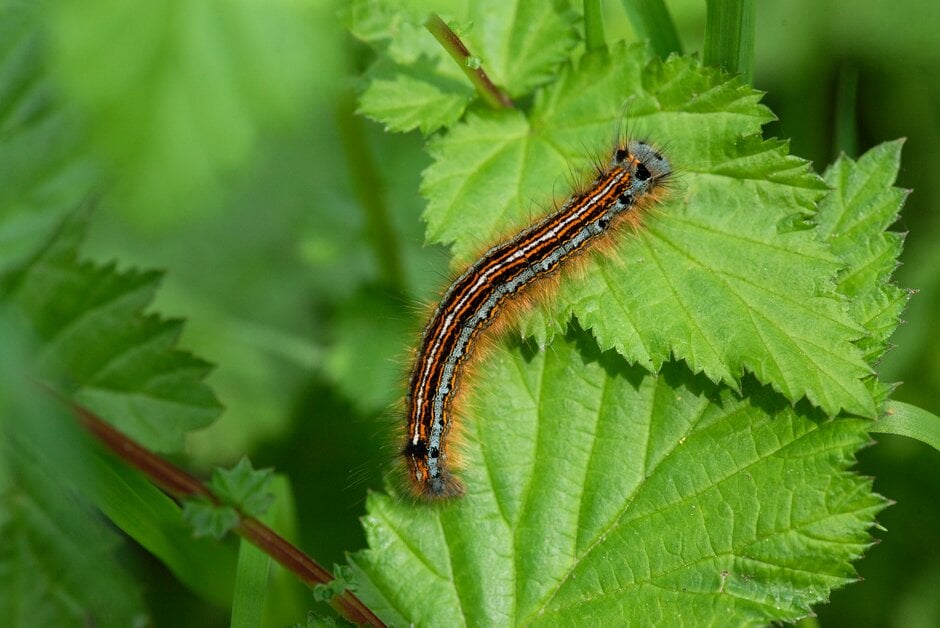Lackey moth
The large orange, white and blue striped brown caterpillars of this moth feed in groups and can consume large amounts of foliage on a range of deciduous trees. Damage not usually serious and the caterpillars are part of the biodiversity a healthy garden can support.

Quick facts
Scientific name: Malacosoma neustria
Plants affected: A wide range of deciduous trees and shrubs
Main symptoms: Defoliation, webbing and orange, white and blue striped brown caterpillars
Most active: April to July
What is lackey moth?
Lackey moth adults are mid-brown in colour and have a wingspan of approximately 30mm. They lay eggs in bands of 100-250 that encircle the stems of a wide range of deciduous trees and shrubs.
The hairy orange, white and blue striped brown caterpillars are up to 50mm long. They feed gregariously under webbing and can cause a significant amount of defoliation on their deciduous tree hosts.
Some other caterpillars may appear similar to those of the Lackey moth. Two which may be found in gardens in London and surrounding areas are the gypsy moth and oak processionary moth. The gypsy moth has 7cm long caterpillars which have yellowish heads with hairy brownish yellow and black bodies, it is found on a wide variety of trees and shrubs. Oak processionary moth has hairy black caterpillars that form nests, but is only found on oak. Oak processionary moth has irritant hairs and should not be handled.
Like most moths in the garden he Lackey moth is harmless and part of the biodiversity healthy trees can support. Find out more about supporting moths in your garden.
Symptoms
The egg bands of this moth are often noticed on deciduous tree hosts in late summer. These hatch in April and the caterpillars feed gregariously under silk webbing and can be present until July when they pupate in leaf litter. The silk webbing and defoliation can be obvious at this time.
The adults emerge from July to September and soon lay eggs.
Control
See also...
Encouraging wildlife to your garden
RHS Plants for Pollinators
Butterfly conservation information on lackey moth
Get involved
The Royal Horticultural Society is the UK’s leading gardening charity. We aim to enrich everyone’s life through plants, and make the UK a greener and more beautiful place.